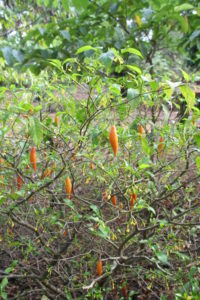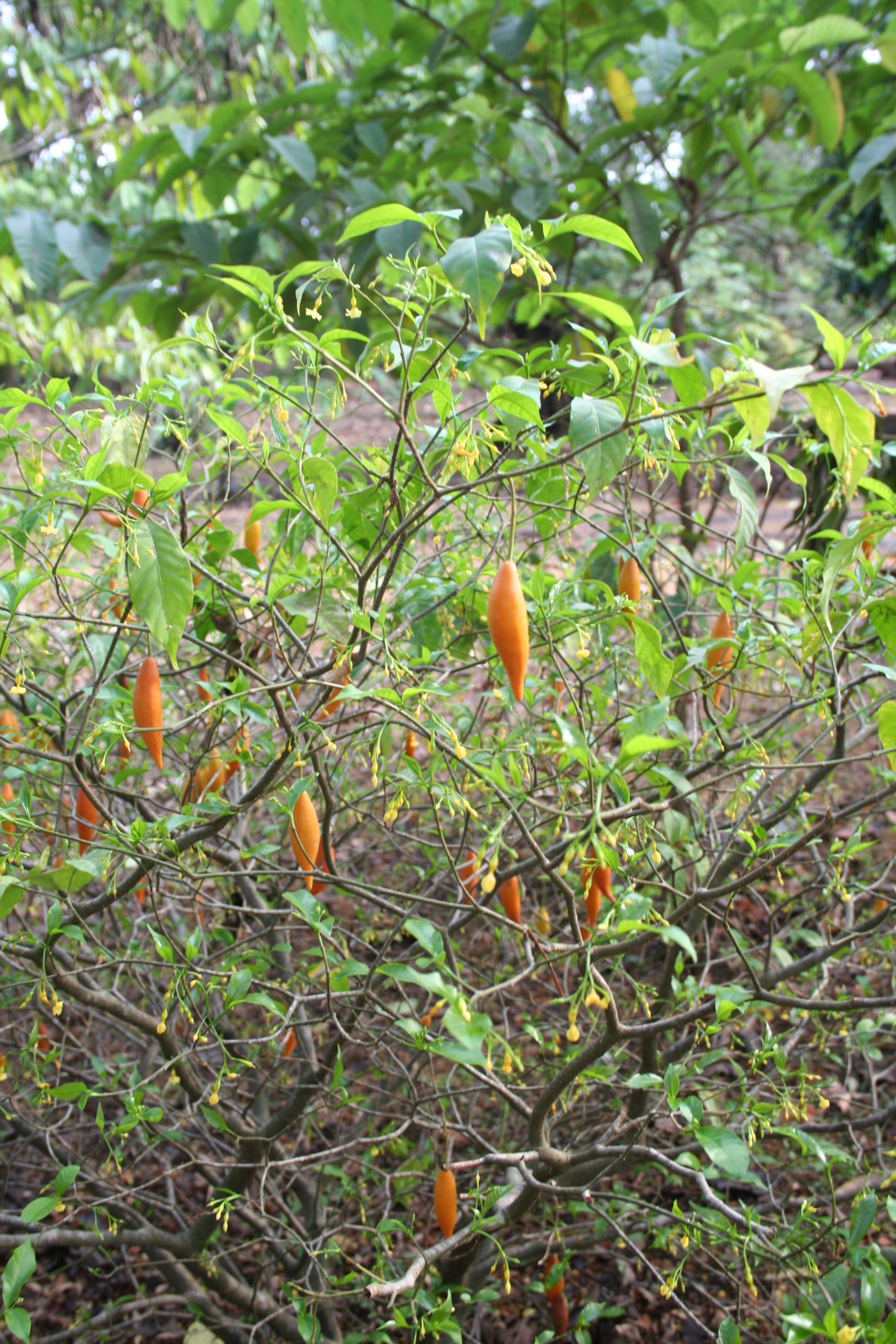
Investigating the potential of psychedelic drugs to treat addiction has been around since the 1950s, when a British psychiatrist named Humphry Osmond first wondered in 1953 if a controlled LSD-produced delirium would help alcoholics stay sober. He would treat over 700 patients in the following ten years and Bill W., a co-founder of A.A., was one of them. Currently, there are a variety of psychedelics being investigated as treatments for conditions ranging from addictions with various drugs to PTSD. One of those is ibogaine, a psychoactive compound extracted from the West African Tabernanthe iboga plant.
Erowid said the first report of Tabernanthe iboga use as a stimulant and aphrodisiac in Gabon and the Congo was in 1864 by Griffon du Bellay, a doctor in the French Navy. A syncretic Christian church called “Bwiti,” who used Tabernanthe iboga in their initiation rites, was founded among the Fang people of Gabon in the late 19th century. In 1903 was the first report of iboga being used as a visionary plant in the Congo. By 1939 an extract of the Tabernanthe iboga plant was sold in tablet form under the name Lambarene for treating fatigue and depression. “It was popular among athletes who used it as a stimulant and to accelerate red blood cell production.”
In 1962 Howard Lotsof inadvertently discovered the anti-addictive properties of ibogaine when he realized after a several-hour trip on ibogaine, he had no withdrawal symptoms even though he had not used any heroin. He administered the drug to several of his addicted friends with similar results. He would later acquire patents for ibogaine as a treatment for acute addiction in 1985 and 1992. In 2009 he founded The Global Ibogaine Therapy Alliance (GITA), a non-profit corporation dedicated to supporting the sacramental and therapeutic uses of iboga. He has authored or coauthored several scientific papers on ibogaine and produced a web portal for scientific studies and lay information on ibogaine, the “Ibogaine Dossier.”
Ibogaine was completely synthesized in 1966, classified as a hallucinogen and made an illegal substance in the USA in 1967. It was classified then as a Schedule I substance, meaning it was considered to have a high potential for abuse and no acceptable medical use. Because of this action, most of the research into ibogaine’s use in addiction treatment has occurred outside of conventional clinical and medical settings and outside of the US.
The Ibogaine Dossier said there were two general types of ibogaine treatment. The first type is sometimes referred to as “initiatory,” and involves a dosage around 8 to 12 mg/kg; it’s used to orient users towards psychotherapeutic or spiritual insight. The other type of ibogaine treatment, which is used for addiction, involves a dosage of 15 to 25 mg/kg, twice as much as an initiatory dose. Lotsof’s early “research” reported that he gave up to 19 mg/kg to a total of 20 individuals.
A subset (n= 7) of Lotsof’s individuals were heroin addicts who reported the alleviation of physical dependence and cravings. Five of the seven individuals reportedly remained free of heroin for 6 months or more following their treatment with ibogaine. “The activity of the group eventually ceased in 1963 when FDA and law-enforcement agencies eliminated the ability of S&L Laboratories, as Lotsof put it, ‘to procure drugs and administer them to interested persons.’” The pharmaceutical industry was not interested at the time in developing ibogaine, viewing addiction as an economically unattractive area for medication development.
But Lotsof and others persisted in their efforts to do research and provide treatment with ibogaine. Lotsof organized a company, NDA International, which provided research funding to Dr. Stanley Glick at Albany Medical College, who demonstrated ibogaine decreased the intake of morphine in rats. See here and here for Glick’s 1991 articles on his research. Glick would continue his research on “iboga” for the next ten years and generate a body of work with over 60 peer-reviewed articles on ibogaine and related compounds. His work has been supported by the National Institutes of Health (NIH).
NDA International recruited and treated patients in the Netherlands because ibogaine treatment could not be legally provided in the US. A total of 40 to 45 individuals were treated between 1989 and 1993 in the Netherlands. “The data from these treatments, together with the 20 subjects treated in the United States by Lotsof between 1962 and 1963, provide the principal source of the case study evidence that has been presented to the National Institute on Drug Abuse (NIDA) and the FDA.” But the death of a female patient in the Netherlands in June of 1993 ended the treatments there by NDA International. Although the official Dutch inquiry into the woman’s death was not conclusive, it nevertheless decreased the enthusiasm to do further investigations with ibogaine.
Kenneth Alper said in “Ibogaine: A review” that while the death of the 24-year-old woman during a heroin detoxification treatment was a significant factor in the NIDA decision not to fund a clinical trial in 1995, “Forensic pathological examination revealed no definitive conclusion regarding the probable cause of death.” There was some evidence that suggested the possibility she had secretively used opioids, presenting another element of uncertainty for her death. He then added: “There is evidence suggesting that the interaction of opioids and ibogaine potentiates opioid toxicity.”
However, in 1991 there was some interest in ibogaine research sparked with Deborah Mash, a faculty member in the Department of Neurology of the University of Miami. In a 1996 radio interview, she said she became interested in ibogaine after hearing a presentation by Dr. Glick on his research with ibogaine and rats. Dr. Mash organized a clinical trial of ibogaine and received approval of an Investigational New Drug Application from the FDA. The study began in December of 1993, but was eventually suspended as result of the unavailability of grant support. She said the ibogaine molecule was unique, doing something to human consciousness, “something to the brain, something to craving and withdrawal signs that’s very different than anything we know about right now.”
Ibogaine has a very unique structure, it’s almost as if that plant has created a magical structure that has a very rigid backbone, that is somewhat seratonin-like. Seratonin is a neurotransmitter that is associated with drugs like Prozac and with depression and changes in the brain that are normal with aging. Ibogaine also has another alkaloydal piece that hangs off the side of this rigid backbone that seems to resemble cocaine. It’s a molecule that seems to have affinity for the opiate side, and has some affinity for the cocaine side and as a pharmacologist that really grabbed my attention. There’s something real fundamental about this molecule that maybe explains its efficacy, and if these anecdotal reports that were out there in the addict self-help movement were true and could be validated, then together with our knowledge of the structural chemistry of the molecule, we might get some fundamental insight into the process of addiction itself.
This was not the end of Dr. Mash’s research and treatment efforts with ibogaine. In 1998 she coauthored a study into the safety, pharmacokinetics and dose effects of ibogaine and its metabolite, noribogaine in cocaine-dependent patients. In 2001 she coauthored a chapter in The Alkaloids: Chemistry and Biology, “Ibogaine in the treatment of heroin withdrawal.” Along with her coauthors, Dr. Mash found ibogaine to be effective in blocking opiate withdrawal. However, it has complex pharmacokinetics and an uncertain mechanism of action with regards to treating opiate dependency. The authors suggested “Identifying noribogaine’s mechanism of action may explain the way ibogaine promotes rapid detoxification from opiates after only a single dose.”
In a 2016 a study of noribogaine, Mash and others investigated the effects it had on substance-related disorders. Their findings suggested the metabolite noribogaine rather than ibogaine mediated the effects of ibogaine blocking withdrawal. “Noribogaine may hold promise as a non-addicting alternative to standard opiate replacement therapies to transition patients to opiate abstinence.” Then in 2018 Mash and others published a study whose results “Confirms the original claims made by Howard Lotsof.” It demonstrated that medically assisted ibogaine detoxification was a safe and effective method to discontinue substance dependence or misuse. Dr Mash has published additional studies with ibogaine besides those mentioned here.
MAPS, the Multidisciplinary Association for Psychedelics, has been supportive of research into the use of ibogaine to treat addiction and has an extensive listing of research updates, news and event announcements on a variety psychedelic drugs, including ibogaine. It also funded two observational studies of the long-term effects of ibogaine treatment in Mexico and New Zealand. The Mexican study reported on outcomes up to one year following opioid detoxification with ibogaine of 30 individuals with OUD (opioid use disorder). Participants were followed up at intervals of 1, 3, 6, 9 and 12 months. The results indicated that ibogaine had a substantial treatment effect in opioid detoxification and appeared to reduce drug use at one month, which was sustained up to 12 months in a subgroup of subjects. “No clinically significant cardiovascular or other medical events occurred in this study.”
The New Zealand study was a prospective observational case series of 14 participants seeking ibogaine treatment for opioid dependence and who were committed to regular contact for 12 months post-treatment follow up. “Consistent with preceding studies, evidence showed significant attenuation of withdrawal, sustained reduction in drug craving/use, and cessation of use in some cases.” This sustained reduction occurred in 12 of 14 participants. One patient died during treatment before they were formally enrolled. Two investigations suggested the participant’s death was due to a failed duty of care by the treatment provider. The death was likely “related to ibogaine ingestion and most probably related to a cardiac arrhythmia.” There will be more discussion of this potential adverse event with ibogaine treatment in part 2 of this article. In conclusion, the author noted that despite the limitations, which included its reliance on a small (n= 14) convenience sample already intending treatment,
This study has demonstrated that for some opioid-dependent individuals, ibogaine treatment can be effective in significantly reducing opioid withdrawal, craving and depressed mood, and reducing or ceasing opioid use. Given the modest success of existing treatments, some of which involve extensive, repeated administration and considerable risk, and the significant increase in opioid dependence globally, it seems prudent to more seriously examine the place of ibogaine in the context of treating this intractable problem.
Despite the apparent promise of the research reported above, the ghost of adverse events, particularly fatalities, haunts serious research into ibogaine for opioid treatment. It was what stopped the clinical trial in the Netherlands in June of 1993, and raised its head again in the New Zealand study described above. Yet, there seems to be a growing body of research interest into its use for opioid treatment. For example, there are two clinical trials registered for ibogaine in the treatment of alcoholism and methadone detoxification. Neither study is recruiting yet and neither study is to be done in the US.
The fact that ibogaine is largely unregulated as a treatment for addiction and used to promote spiritual and healing experiences—sometimes by the same provider—should give someone seeking it for addiction treatment pause. But addicts are often desperate individuals, willing to take the risk. We will look at some of the risks and concerns in Part 2.
For more information on Bill W. and LSD, see “As Harmless as Aspirin?”





